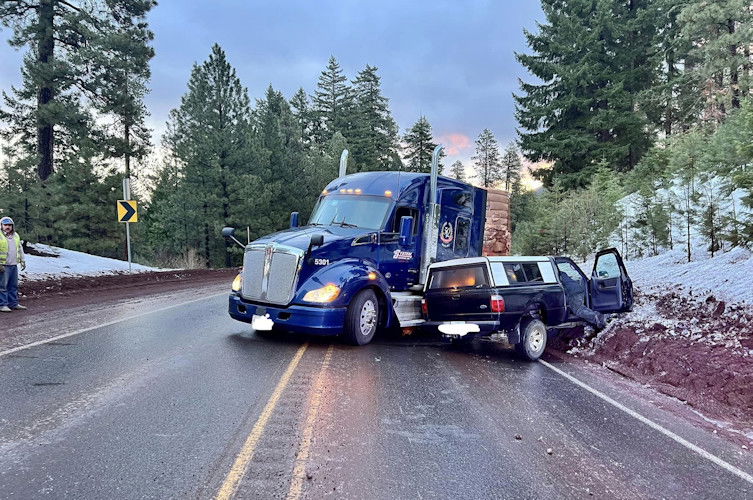Police respond to 2 crashes on ‘deceptively icy’ Hwy. 20 near Suttle Lake; ODOT urges avoiding ice-storm travel

BLACK BUTTE RANCH, Ore. (KTVZ) – Even before an ice storm that is prompting warnings over much of Oregon, roadways were getting deceptively icy, especially near Santiam Pass, Black Butte Ranch police advised after responding to two crashes near Suttle Lake.
Oregon State Police and ODOT also responded to the crashes. There was no word of any serious injuries.
“BBPRD reminds all operators to use extra caution in these challenging and deceptive road conditions,” their Facebook post said.
In fact, ODOT said Wednesday afternoon that "anyone planning holiday travels should get on and off the road before the coming ice storm hits the roads."
Here's the rest of their news release:
Forecasts say the ice storm will start Thursday night and reach large parts of Oregon. Travelers should complete their journeys before the storm arrives to have a safe and happy holiday.
Often, ice hits briefly and in one location. This storm may have a broad impact across many sections of the state. That means if portions of Interstate 84 are closed in the Columbia River Gorge, many of the usual alternate routes may be icy as well.
Ice is the most dangerous of all road conditions, and we have few effective tools to deal with freezing rain or ice. Even fully chained-up trucks slide off icy roads. The safest step for dealing with an ice storm is to stay inside.
Here are some things you need to know about driving in icy conditions:
- Know before you go. The Tripcheck.com cameras often have helpful information aside from video images. This can include elevation and temperature to help you know more about conditions on your route.
- Ice can bring down trees and power lines. When traffic signals go dark, treat intersections like a four-way stop.
- Deicer and salt lose effectiveness as temperatures drop. The deicer we use – magnesium chloride with rust inhibitor – works slower in the upper teens. Below 18 degrees salt is less effective.
- Increase your following distance to 5-6 seconds. This increased margin of safety will provide the longer distance needed if you have to stop.
- Know your brakes. Whether you have antilock brakes or not, keep the heel of your foot on the floor and use the ball of your foot to apply firm, steady pressure on the brake pedal.
- Don’t stop if you can avoid it. If you can slow down enough to keep rolling until a traffic light changes, do it. There’s a big difference in the amount of inertia it takes to start moving from a full stop versus how much it takes to get moving while still rolling.
- Accelerate and decelerate slowly. Apply the gas slowly to regain traction and avoid skids. Don’t tr